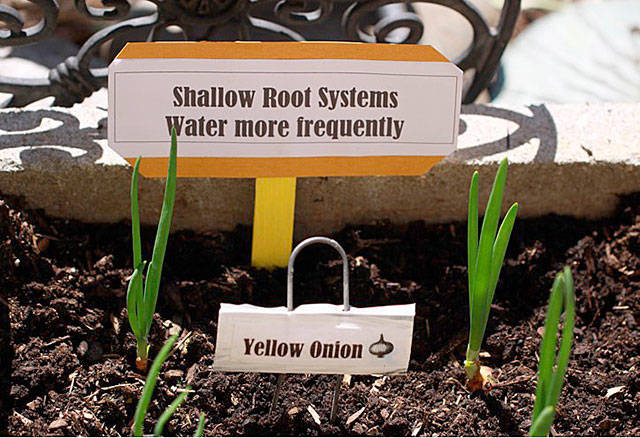By Jeanette Stehr-Green
A generally accepted rule for watering the vegetable garden is to apply one inch of water each week. But what is the reasoning behind this rule and are there exceptions?
The rule
The roots of plants take up water. To get water down to where the roots lie, you typically have to apply about one inch of water to most vegetable plants.
To encourage roots to grow deep into the soil, it also is good to let the top couple of inches of soil dry out between waterings which takes about a week.
Less frequent (weekly) but deeper watering (applying larger amounts of water at one time so it goes deep into the soil) not only supplies the water needed by the plant but prepares the plant for periods of drought.
Exceptions to the rule
Because a number of factors affect watering needs and availability, there are exceptions to the above rule.
Weather plays a major role in deciding when to water and how much to apply. During rainy weather little watering, if any, is needed; Mother Nature does all the work. During warm and sunny weather, plants use more water and lose more through their leaves; an estimated additional ½ inch of water per week is needed for every 10-degree increase in the average daily temperature above 60 degrees.
Different soil types accept water differently, also affecting watering practices. Water moves slowly through clay soil and is held tightly; water moves quickly through sandy soil but is not held as tightly.
As a result, soils with more clay in them need to be irrigated slowly to prevent run-off; they also need less frequent watering because they retain moisture better.
In contrast, soil with more sand in it should be irrigated with smaller amounts of water over shorter periods to keep the water from moving beyond the root zone, but watered more frequently than clay soils since they will not hold onto water as well.
The crop and stage of growth also affect watering needs. Seeds need constant moisture in order to germinate. Since seeds are planted in the top inch or so of soil (and sometimes as shallowly as 1/8 of an inch) newly planted seeds need more frequent watering because the soil surface dries out quickly.
Keep the seed bed moist (but not soggy) and apply the water gently so that the seeds aren’t washed away.
Seedlings (newly sprouted seeds) initially have superficial roots. They also need more frequent watering until they become established with deeper roots.
Some vegetables, such as lettuce, spinach and onions, naturally have shallower root systems even when established. These crops need to be watered more frequently than other vegetables.
Plants such as tomatoes, winter squash and asparagus have deep root systems and can draw water from deeper in the soil. These crops typically require less watering (after they become established) than other vegetables.
Many vegetables need extra water when in flower or fruiting. For example, legumes (beans and peas) and corn require more water when in flower. Tomatoes and squash benefit from extra water when their fruit is developing.
Most container plants need watering on a daily basis in hot, dry conditions. Irrigate until water runs out the bottom of the pot.
Although “the rule” suggests giving your vegetable garden 1 inch of water each week and allowing the surface of the soil to dry out, rules are meant to be broken. Consider the weather, soil type and crop when deciding when to water. Irrigate your plants when conditions indicate a need for water, not according to a rule.
Jeanette Stehr-Green is a WSU-certified Clallam County Master Gardener.


